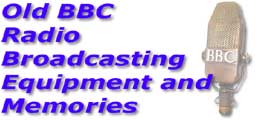Studio 3E was a 'chapel' in the early days of BH, occupying space into the fourth floor to give it height. The area was badly damaged by bombing during WWII. A much later rebuild equipped it with a small Type B desk and a couple of tape machines in a very narrow cubicle.
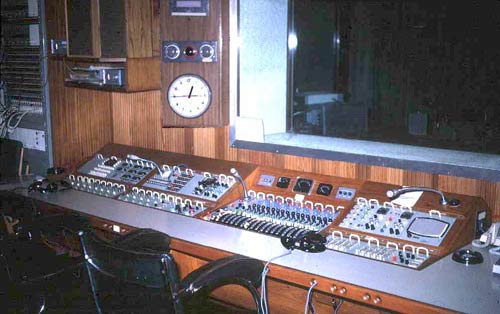
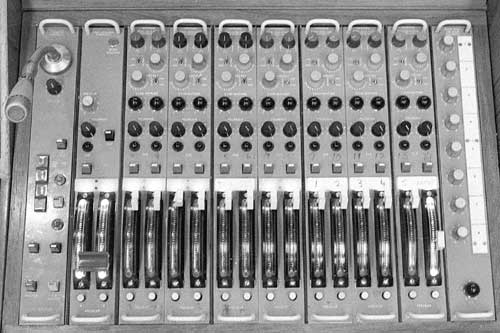
The Type D desk was built in both mono and stereo versions, with a range of different modules. Compare, for example, the channel modules on this desk and on B13's on the next page of this section.
The controls on the modules are routing (to the clean-feed network), pre-set gain (coarse and fine), echo mixture (not used here), foldback, cue light, fader and pre-fade button. The ganged faders on the main module are not a stereo pair, but the main fader and a fader controlling the local sources into the clean feed network. The module to the right is a microphone sub-mixer that was installed for the Today Programme.
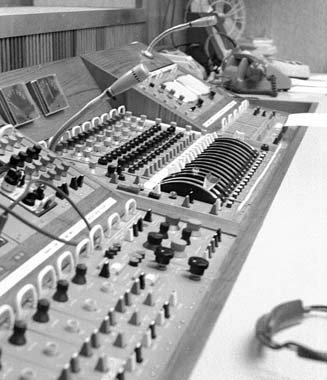
Looking along the front of the desk in this shot, the outside source modules are in the foreground. Next come the keys controlling the control room telephones, but we're not sure what the next module with the old-fashioned knobs and half a dozen buttons was for! It's probably a passive filter used to remove the 'heart-beat' from telephone calls. The final, large module is the monitoring.
Above the outside source modules the insert jackfield is just outside the shot, on the left. To the right of the channel modules are the producer's and SM's outside source controls, with indication of cue and talk-back settings, and producer's talkbacks. Above are the tape machine remotes.
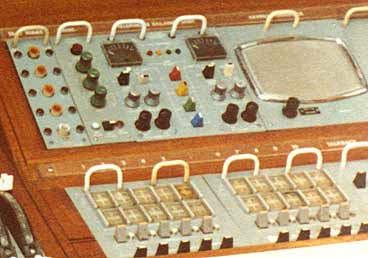
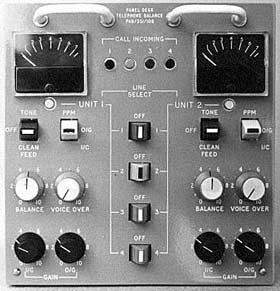
The telephone balance module was a PA8/351 consisting of two balance and control units in a three width module and allowing access to 4 lines. The electronics were designed by Len Davis of Glensound, (and ex-BBC Designs Department) and Type D design and packaging was done by Bev Marks, a BBC Technical Services Modifications Engineer.
A first batch was made in-house and then they were manufactured in quite large quantities for installation in all the Type D Cons and Mixers. The first balance units to be designed to be built into desks, they also appeared in older installations - see, for example, the pages about Studio 3B.
Related page

Type D in Studio 3G of Broadcasting House
3G was adjacent to the newsroom and used for Radio 4 summaries and recording pieces for the main bulletins. A small cubicle, it was equipped with a smaller version of the Type D with six outside sources and the usual telephone balance unit as seen above. To the left of the desk is Studer A710 cassette machine and an ITC99 cart machine. The M100 intercom to the right connected to other news areas. At the time these photos were taken four Telefunken M15A tape machines had been squeezed in.
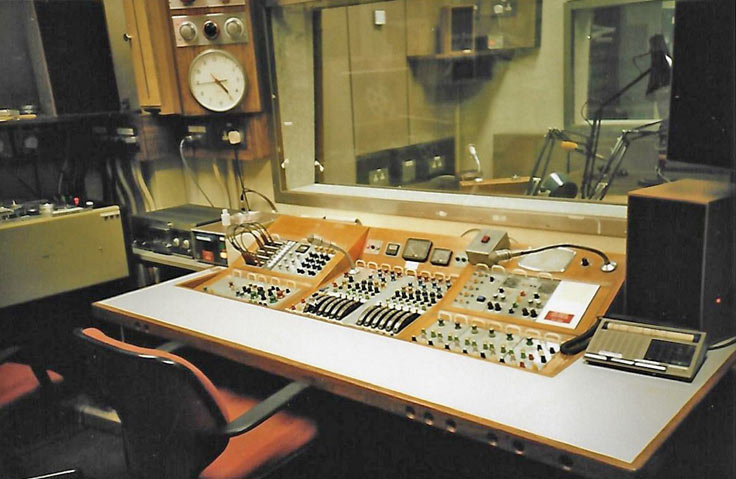



A further window behind the cubicle desk looked into Studio 3F (below right), used by Radio 2. It could be used as a stand alone source for short summaries but the mic could also be accessed by 3G for longer R2 bulletins to be routed through its desk allowing the inclusion of tape inserts. The desk in 3F was an old OB one, believed to be ex-Radio 1 club.
In this section
